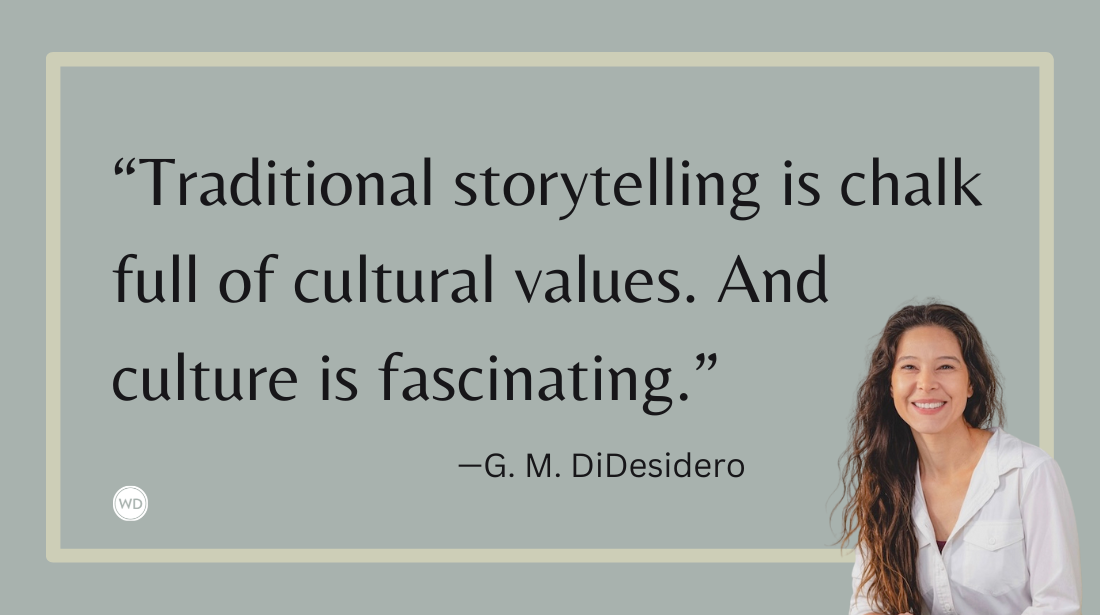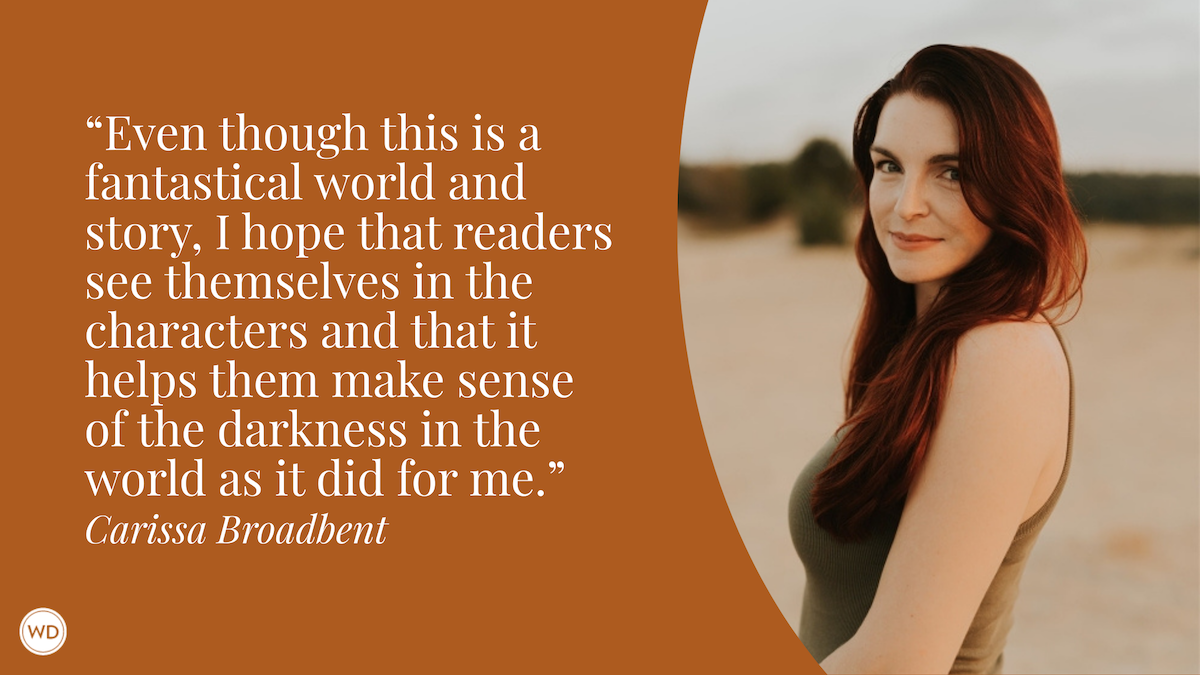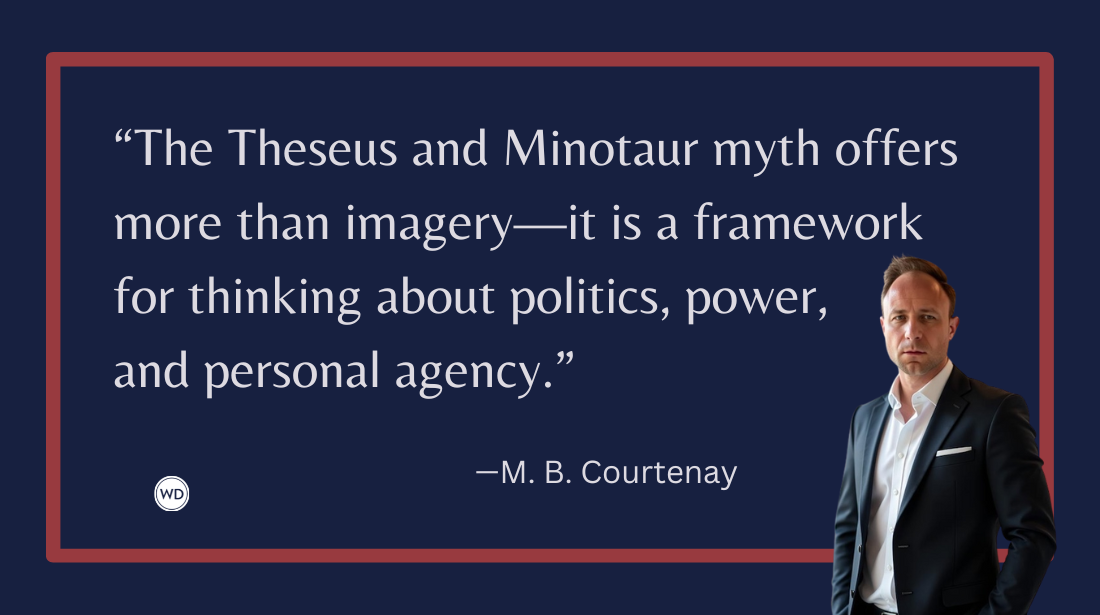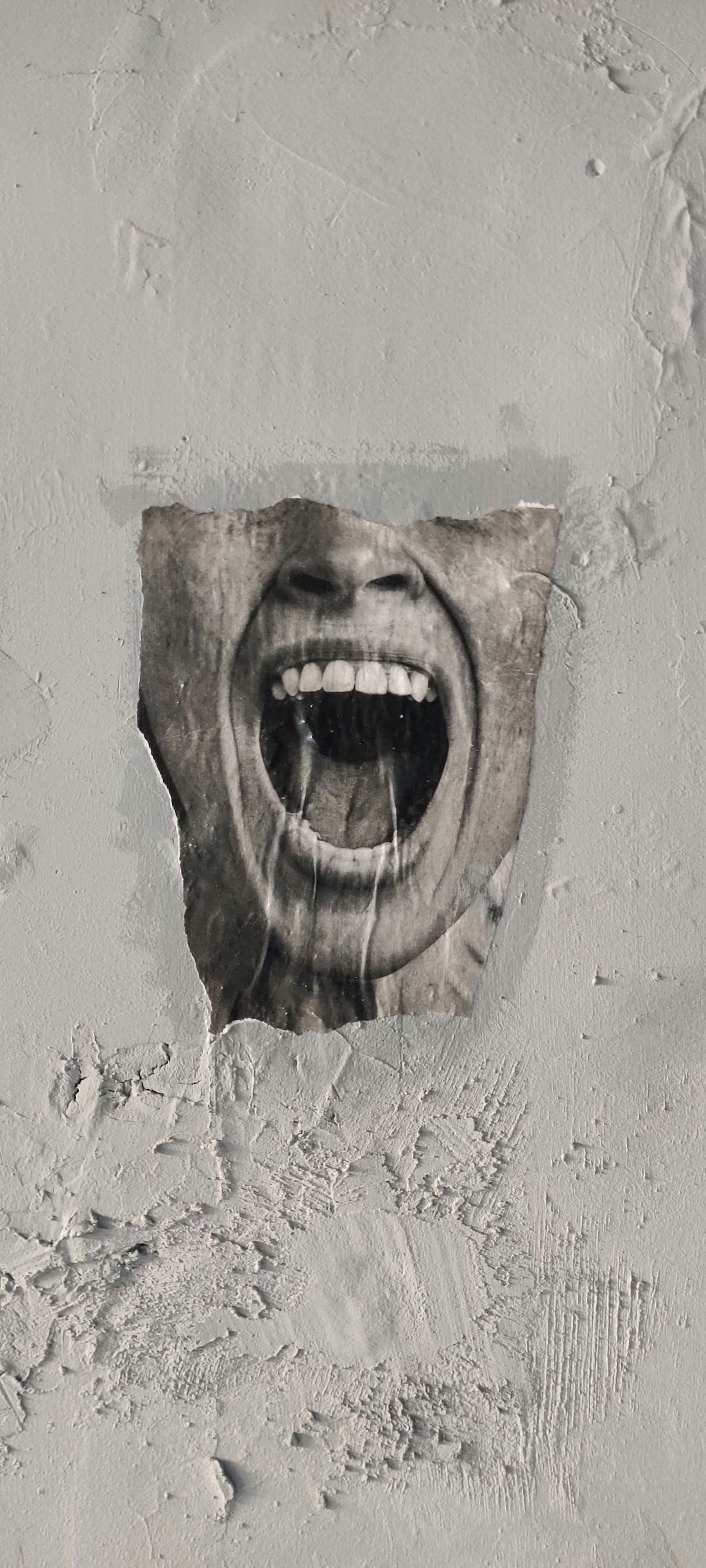Breathing Life Into Dead Stories
Microfiction novelist Ran Walker offers five tips for writing better horror—and terrifying your readers along the way.
[This article first appeared in the March/April 2023 issue of Writer's Digest.]
During a commercial break for an episode of “American Horror Stories,” a GEICO insurance commercial comes on. We see a group of young adults, all of them familiar archetypes in their dress and personalities. They are hiding from a Jason/Leatherface/Michael Myers type of character who is wielding a chainsaw. The group, in their feeble efforts to escape their masked assailant, make bad choice after bad choice, even electing to steer clear of an empty, running car they could have used to get away and instead running into a shed full of rusty blades hanging from the ceiling, all the while the would-be killer is shaking his head at the ridiculousness of it all. The commercial is hilarious, even if you are not a horror fan. But if you are a horror fan, it serves as a reminder how prevalent horror tropes are in popular culture.
For those of us who are writers of horror fiction (or who aspire to write horror fiction), it is imperative for us to both know and understand the commonly used character archetypes of the genre, as well as its many well-defined tropes, whether you are seeking to mock them or to deviate from them entirely so that you can surprise your reader with greater frequency. This task is made even more challenging because people who read or watch stories in this genre are usually avid about their love of horror and have, therefore, consumed so much of it that it is difficult to surprise them—even with the most original idea that you might come up with.
Still, the growing number of horror stories shouldn’t deter you from writing something new. It just means that you might have to be a bit more intentional about your approach to the genre. There are a number of ways to approach the writing of horror, but I have found the following five things to be instrumental in helping to create a fertile mindset for writing something that is both novel and frightening for readers of the genre.
1. Use enough of the existing tropes to be identifiable as horror, but make sure you insert your own originality into the mix.
One of the reasons people gravitate to genres in general is because they have certain expectations for what should happen in the story. Romance writers are looking for their star-crossed lovers to meet, grow to like each other, get angry with each other over some misunderstanding or the exposure of a tightly held secret, and finally resolve their differences and fall in love. These tropes are not there to insult the reader’s expectations. They simply come together to create a type of story that plays into the expectations of the readers. Horror writers are not necessarily deprived of creativity because these elements are present, though. They just have to find new and engaging ways of telling stories with these plot points or narrative beats. Think of it as the flesh that goes over a skeleton.
With horror, there are also certain expectations that readers hold. For one, they expect to be frightened—or at the bare minimum, made to feel extremely uncomfortable. They also expect some bad situation to present itself to the protagonist and for the protagonist to have to fight through this, barely surviving—if, in fact, they do survive. Horror readers want to feel like there’s someone lurking in the back of a closet or behind an open refrigerator door. They want to feel dread from the appearance of an apparition at the end of a hallway. They want to feel like that one rat is the tip of the spear for a thousand other rats, eager to gnaw through whatever gets in their way. They want to feel like that strange man at the front door, the one wearing the off-kilter mask, will find his way into their home, whether they let him in through the front door or not. We don’t want to deprive our readers of what makes something a horror story, just because they might expect some semblance of what we have planned, but we do want to find our own unique ways of expressing these ideas so they feel fresh and original. Much of this can be the direct result of the attention you pay to the development of your characters in these stories. For example, the movies The Happening and Bird Box have very similar plots (some unseen horror is unleashed upon a particular environment and a thrown-together group of people must navigate this chaos), but the stories differ in their specific details and the ways in which the ensemble characters are developed. If the reader cares about the characters, the reading experience, tropes included, will feel much fresher. For fun, you can watch most horror movie trailers and notice that you are first introduced to the main characters in a manner that seems normal and familiar. Once that has been established, all bets are off and you can expect anything to happen. When you’re writing, don’t forget that it’s easier to scare us if we care about the characters you create.
2. Look for ways to flip archetypes on their heads.
One of the best examples of typical horror archetypes being flipped on their heads is the film The Cabin in the Woods, which uses the most basic character archetypes (including the horror buff who knows about all of the horror tropes while still, ironically, being susceptible to them) and pulls the rug out from under the viewer by reframing the story. Using a technique like this allows the reader to know that you are not oblivious to these archetypes and tropes and that you are prepared to have fun with them in interesting and novel ways.
The archetype of the “final girl” references the sole woman who survives the murderous rampage of a (usually) masked killer. We see her terrorized and running for her life. Then we see her decide to fight back. This archetype, made famous by films like Halloween, is particularly popular in the current horror literary culture, with several books building stories around this concept, including Riley Sager’s Final Girls, Stephen Graham Jones’s The Last Final Girl, and Grady Hendrix’s The Final Girl Support Group.
Another common archetype, especially in movies, is the Black person who dies first. Dr. Robin R. Means Coleman points out in her book Horror Noire that often times, the monster kills a Black person first to establish that it is a powerful entity, so when the white protagonist takes down the monster at the end, the viewer/reader can afford this accomplishment with the proper measure of gravitas. Other racially centric archetypes include the Magical Other, which is a BIPOC character who possesses a certain magic that they use exclusively to help a white protagonist, and the older, mysterious BIPOC character who informs the white protagonist of the meaning behind the horror that is occurring (such as Jeepers Creepers and Final Destination). Being aware of these archetypes can help you to steer clear of stereotypes, but also give you space to turn these ideas on their ear and subvert the expectations of the reader or viewer. For example, two recent horror films, Barbarian and The Invitation, have Black female leads (final girls, if you will), which, given the history of horror archetypes, has been surprisingly underutilized throughout the years.
3. Read as much as you can so you are aware of what other horror writers are doing.
There is simply no way around reading other horror writers and viewing other horror media. How else will you know what ideas have been used and how they have been used? Several years back, I taught a creative writing class where a student who’d never read Moby Dick (and was unfamiliar with anything about the story) actually wrote the first line of Melville’s classic, unknowingly, as the first line of his own short story. Convinced he had just heard and stored this sentence introducing Ishmael in the back of his mind, only to pull it out of his subconscious for this story, I was prepared to explain this peculiar situation away. It turns out, the student had never heard the sentence before, consciously or otherwise, and had produced the sentence from his own imagination, causing the rest of the class to stare in disbelief.
From time to time, I read stories that remind me of other stories I have already read. Often times, this is a byproduct of writers just not knowing that other writers have already taken on those topics. The more you read in your genre, the better chances you will have of navigating a path that is more unique. Originality is important for publication, and to be as original as possible, you have to be well versed in what has already been done so that you will know how to leave your own mark on a particular plot.
4. Challenge yourself to skip over the low-hanging fruit and go for bigger ideas.
When you are writing horror, it can be tempting to go for the easy scares or gross-outs. With millions of people writing in this genre, that would be considered the easiest approach to writing horror. As I mentioned earlier, though, one of the keys to writing successful and publishable horror is to be as original as you can be. Low hanging fruit like characters tripping over twigs the size of pencils while trying to escape a killer who is walking slower than an intoxicated sloth are clichés at this point. While you’d never actually write a story like that (I hope), it is not difficult to fall into the trap of scaring by the numbers, the way a person might paint by the numbers.
Be willing to take risks and play the long(er) game when it comes to scaring your readers. Think of it like you would a pot of water on the stove, where the temperature (or, in this case, suspense) is gradually rising. Readers of Stephen King will notice how he slowly builds the suspense of his stories, treating you to smaller scares or moments of discomfort along the way. With Shirley Jackson, we are often introduced to environments where things are slightly (or majorly) askew, causing us to approach the plot with some degree of consternation. Challenge yourself to create quality moments within your story and fight the urge to go for cheap scares. Your readers will thank you for this.
5. Be honest about what scares you.
Writing ghost stories or demon possession stories or monster stories when you are not afraid of those things yourself is not the best recipe for writing horror. Think about what genuinely frightens you and why that thing frightens you. Chances are, there are many other people out there who fear the same thing. There are literally thousands of things to be afraid of, and, interestingly, most of them are not explored in books or films. Look for story ideas that revolve around scary things that are not as obvious to most readers of horror. A classic example of a story that doesn’t seem particularly scary in its description, but is surprisingly scary in its execution, is the 1985 film Return to Oz, a sequel to the adaptations of L. Frank Baum’s The Wonderful Wizard of Oz. In this story, Dorothy is rescued from a lobotomy and returns to Oz, only to be chased by frightening characters and eventually find herself in a room full of human heads used by a witch who changes faces like people change clothes. Clearly, horror can be found in the most casual things. A simple examination of a list of phobias might prove to be valuable fodder for a story idea. Don’t be afraid (pun intended) to explore frightening things that are a bit more personal to you. At the very least, you will likely scare yourself (and probably many other people) in the process.
Ultimately, the most important element to writing your best horror is to simply be yourself and don’t feel that you have to imitate other horror writers. It is good to be inspired by other writers, but allow that inspiration to guide you into new and uncharted territory. A final note about originality: above all, hold true to your vision for your story. Try things you want to read that you’ve never seen done before. Tell stories with characters we don’t often see. Reach for the fruit higher up on the tree. Flip reader expectations. And, finally, most of all, be as scary as you can.
Ran Walker (he/him) is the author of 25 books. His short stories, flash fiction, microfiction, and poetry have appeared in a variety of anthologies and journals. He is the winner of the Indie Author Project's 2019 National Indie Author of the Year Award (selected by judges from Library Journal, Publishers Weekly, IngramSpark, St. Martin's Press, and Writer's Digest), the 2019 Black Caucus of the American Library Association Best Fiction Ebook Award, the 2018 Virginia Indie Author Project Award for Adult Fiction, and the 2021 Blind Corner Afrofuturism Microfiction Contest. Ran is an Assistant Professor of English and Creative Writing at Hampton University and teaches with Writer's Digest University. He also contributes to Writer's Digest magazine. He lives in Virginia with his wife and daughter.









